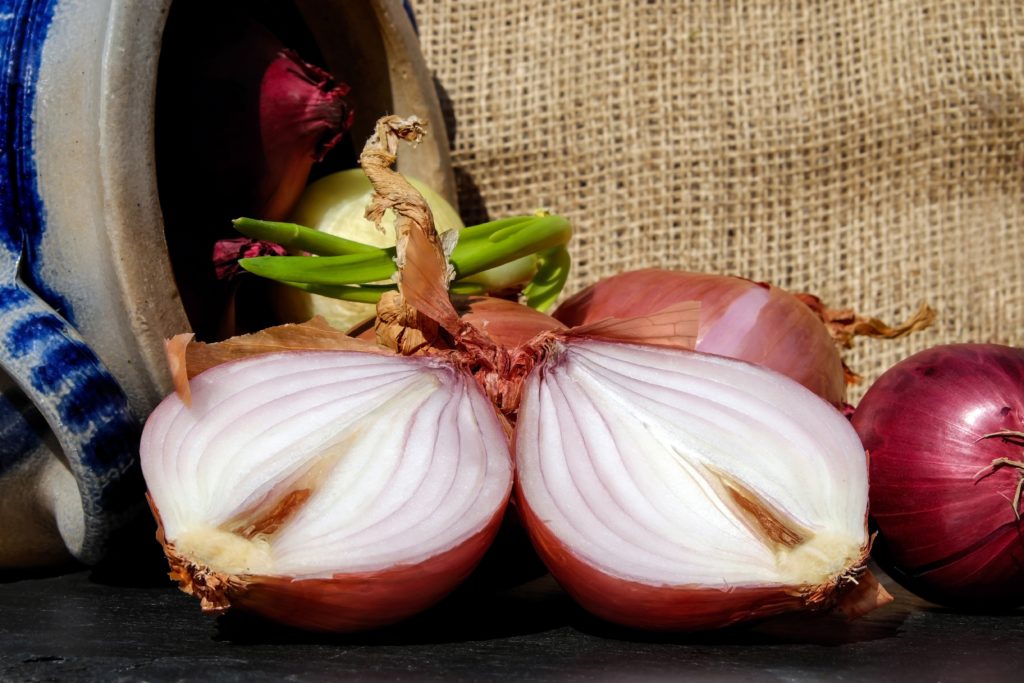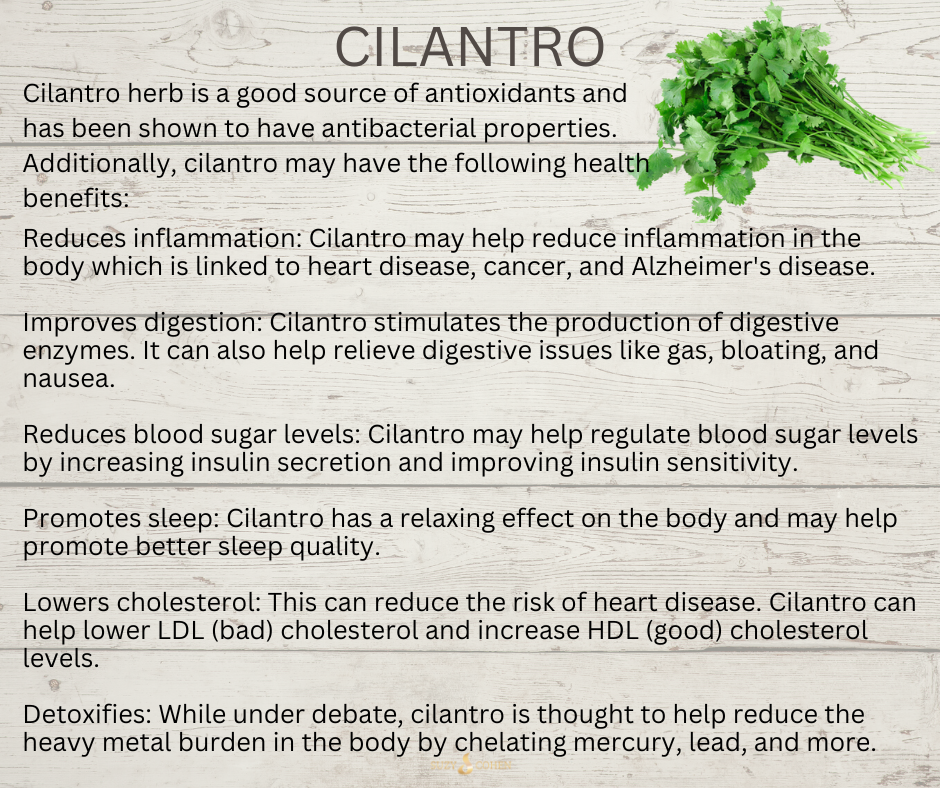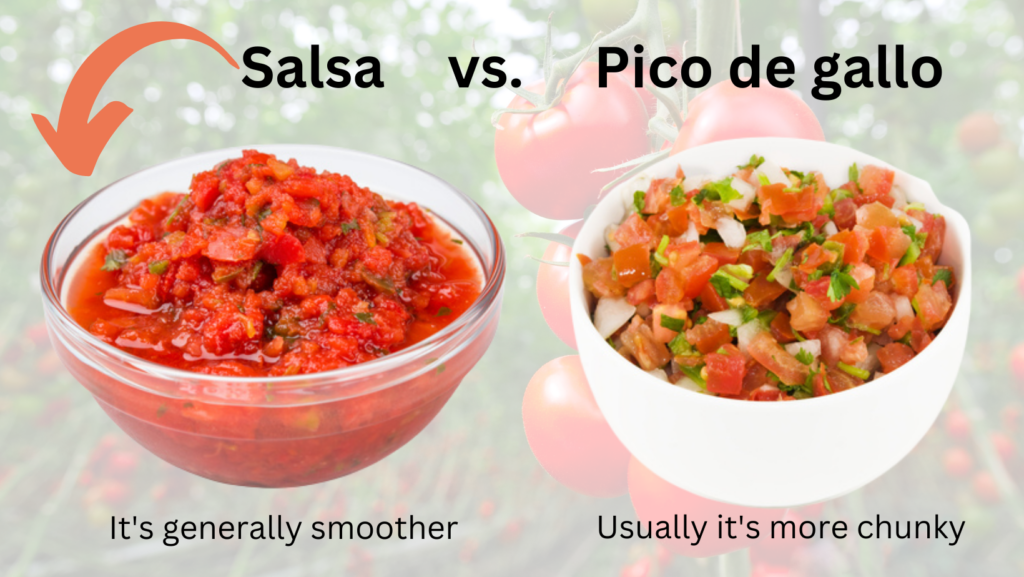What's On This Page?
ToggleAh, salsa YES! I see you’re a fan of the fiery stuff or you wouldn’t be reading this blog!
Did you know that the largest bowl of salsa ever made weighed over 4,000 pounds?
That’s enough to fill over 123,000 standard-sized salsa bowls! The record was set in 2013 by a group of students from the Universidad Autónoma de Nuevo León in Mexico. They used over 11,000 pounds of tomatoes, 1,400 pounds of onions, and 900 pounds of jalapeño peppers to make the gigantic batch!
If you’re thinking of making your own salsa, don’t worry, you don’t have to go for the world record.
Right now I want to give you the basic ingredients for salsa and talk about the major health benefits. All of this may surprise you! At the bottom of this blog, I’ll explain the difference between pico de gallo and salsa.
I don’t like it too hot personally, so If it’s not spicy enough for your taste, why don’t you challenge yourself to make the spiciest sauce you can handle? Or, try making a fruity version by adding some tiny chunks of mango or pineapple. It will make it sweet and spicy – that’s a nice twist! Whatever your salsa preference may be, just remember: life is too short for bland salsa!
The 7 main ingredients in a classic salsa recipe are:
1. Tomatoes – Tomatoes are a good source of vitamin C, potassium, and antioxidants like lycopene, which has been linked to a reduced risk of heart disease and certain cancers.
2. Onions – Onions contain antioxidants and sulfur compounds that may help lower blood sugar levels, reduce inflammation, and improve heart health.

3. Jalapeño peppers – Chili peppers like jalapeño or Serrano contain capsaicin, which may help boost metabolism, reduce inflammation, and improve digestive health.
4. Cilantro – Cilantro is rich in antioxidants and has been shown to have antibacterial properties. It may also help lower cholesterol and blood pressure levels. Scroll below to see more health benefits of cilantro.
5. Garlic – Garlic has been shown to have dozens of potential health benefits, including reducing blood pressure, improving cholesterol ratios, boosting immune function and helping with both H. pylori and methane-dominant SIBO (small intestinal bacterial overgrowth).*
6. Lime juice – Lime juice is a good source of vitamin C and antioxidants, which may help boost immune function and reduce inflammation.
7. Salt – While too much salt can be harmful, a moderate amount of salt is important for proper bodily function. It helps regulate fluid balance, muscle function, and nerve function. I suggest you use REAL® Salt, not the nutritionally empty “sodium chloride” chemical type of salt. You may also be interested in this article I wrote, Choosing Salt with One of These Colors Improves Health.
Salsa and Your Heart
Eating more salsa may benefit individuals with cardiovascular disease. Part of the reason is that the ‘heat’ opens up blood vessels and capillaries and improves circulation. Salsa is a low-calorie and low-fat food that is high in nutrients like potassium, fiber, and antioxidants, which have been shown to have a positive effect on heart health.

The tomatoes, onions, and garlic in salsa contain flavonoids and sulfur compounds that may help lower cholesterol levels, reduce inflammation, and improve blood vessel function.
The capsaicin in chili peppers may also help improve blood flow and reduce the risk of blood clots. You may want to measure your D-dimer periodically if you think you’re prone to clots. Here’s an ARTICLE I wrote about D-dimer.
However, it’s important to note that store-bought salsas can be high in sodium, so it’s best to make your own. CLICK HERE to get my recipe which is clean and low in sodium.
If the topic of heart health and blood pressure is important to you, you enjoy my other article, 8 Natural ACE Inhibitors for Heart Health.
Salsa is Keto-Friendly
I believe in the virtues of a keto diet, and salsa is keto-friendly. A ketogenic or “keto” diet is a high-fat, moderate-protein, and very low-carbohydrate diet that is designed to induce a state of ketosis in the body. This metabolic state occurs when the body burns fat for fuel instead of glucose, which is the primary source of energy for most people. The keto diet is a low-carb, fat-burning way of eating which is why it’s a favorite among athletes and those seeking to lose weight.
Some of the potential benefits of a keto diet include improved blood sugar control, reduced inflammation, and weight loss. The diet has also been shown to be effective for certain medical conditions such as epilepsy, diabetes, autoimmune disorders, and some neurological disorders.
It’s low in carbohydrates so long as you don’t eat a whole bag of chips! Salsa is high in fiber. Being low in carbs, and high in fiber are two important factors for those following a ketogenic diet. That said, the exact carb count can vary depending on your recipe and the ingredients used because some commercial brands add sugar or fruits.
Just read the nutrition label on your favorite store-bought brand if you’re on a strict keto diet. One more thing, and I know you know this, but some store-bought brands may contain added preservatives or other ingredients that are not keto-friendly. Making your own recipe using fresh ingredients can be a good way to ensure that it fits within your keto diet. CLICK HERE to get my recipe. Also, here’s a keto-friendly CLAM CHOWDER.

What’s the Difference Between Salsa and Pico de Gallo?
Ah, the great salsa vs pico de gallo debate! This is a hot topic (pun intended) among Mexican cuisine enthusiasts.
So, what’s the main difference between the two you ask? Well, it all comes down to texture. Salsa is typically smoother and more liquidy, while pico de gallo is chunkier and has a more fresh, raw texture.
Salsa is usually made by blending or pureeing ingredients together, whereas pico de gallo is made by chopping fresh vegetables and mixing them together. So if you’re a fan of chunky bits of tomato and onion in your dip, pico de gallo is the way to go.
Another difference is the type of peppers used. Salsa typically uses chili peppers that have been roasted or cooked, while pico de gallo uses raw jalapeños or serranos for a fresh, zesty flavor.
Ultimately, whether you prefer salsa or pico de gallo comes down to personal preference. Some of you like to dip your nachos into a smooth and saucy type, while others prefer a more rustic, chewy texture. So go ahead and try both, and let your taste buds be the judge! You can do what I do sometimes and mix some pico into the hot salsa. Whatever you decide, just make sure you have plenty of chips on hand, because once you start dipping, it’s hard to stop.


Suzy Cohen, has been a licensed pharmacist for over 30 years and believes the best approach to chronic illness is a combination of natural medicine and conventional. She founded her own dietary supplement company specializing in custom-formulas, some of which have patents. With a special focus on functional medicine, thyroid health and drug nutrient depletion, Suzy is the author of several related books including Thyroid Healthy, Drug Muggers, Diabetes Without Drugs, and a nationally syndicated column.


